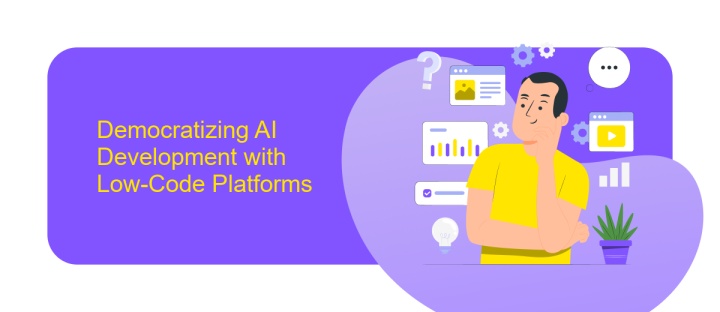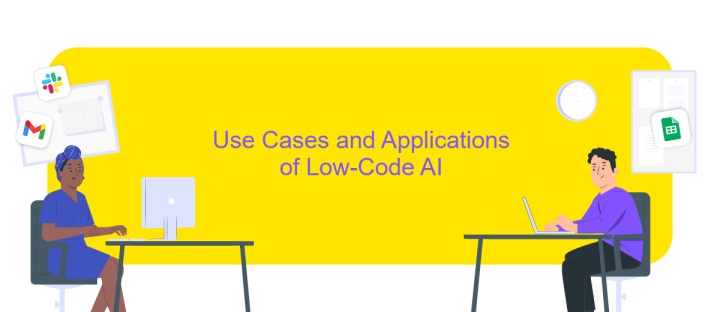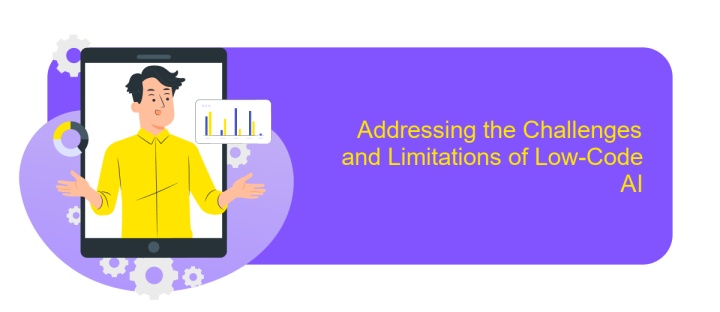Low-Code AI
Low-Code AI is revolutionizing the way businesses approach software development by empowering users with minimal programming knowledge to create powerful applications. This innovative approach reduces the complexity and time traditionally associated with coding, allowing for faster deployment and greater accessibility. By leveraging intuitive interfaces and pre-built templates, low-code AI platforms democratize technology, enabling organizations to innovate and adapt swiftly in a rapidly changing digital landscape.
Introduction to Low-Code AI and its Benefits
Low-Code AI is revolutionizing the way businesses approach artificial intelligence by simplifying the development process. This approach allows users with minimal coding skills to create sophisticated AI applications. By using intuitive interfaces and pre-built modules, organizations can accelerate their digital transformation without the need for extensive programming expertise.
- Reduces development time, enabling faster deployment of AI solutions.
- Lowers costs by minimizing the need for specialized programming staff.
- Enhances collaboration between technical and non-technical teams.
- Improves flexibility, allowing for quick adjustments to AI models.
- Encourages innovation by empowering more users to experiment with AI.
As industries face increasing pressure to innovate and stay competitive, Low-Code AI offers a compelling solution. It democratizes AI development, making it accessible to a broader range of users and fostering a culture of innovation. By bridging the gap between technical and business teams, Low-Code AI not only streamlines operations but also drives strategic growth. This approach is rapidly becoming a cornerstone in the toolkit of forward-thinking enterprises.
Democratizing AI Development with Low-Code Platforms

Low-code platforms are revolutionizing the field of artificial intelligence by making AI development accessible to a broader audience. These platforms eliminate the need for extensive coding expertise, allowing individuals with varying technical backgrounds to create sophisticated AI models. By providing intuitive interfaces and pre-built modules, low-code solutions empower users to focus on innovation rather than technical complexities. This democratization of AI development fosters creativity and accelerates the deployment of AI-driven solutions across industries.
Integration capabilities are crucial for the success of low-code AI platforms. Services like ApiX-Drive streamline the process by enabling seamless connections between various applications and systems. With such tools, users can effortlessly synchronize data and automate workflows, enhancing the efficiency of AI projects. By simplifying integration, low-code platforms ensure that AI solutions can be easily incorporated into existing infrastructures, maximizing their impact. As a result, businesses can swiftly adapt to market demands and leverage AI to gain a competitive edge.
Use Cases and Applications of Low-Code AI

Low-Code AI platforms are revolutionizing how businesses approach software development, enabling rapid deployment of AI solutions without extensive coding expertise. By simplifying the development process, these platforms open doors to a wide array of applications across various industries.
- Customer Service: Businesses can create AI-driven chatbots to handle customer inquiries, improving response times and customer satisfaction.
- Data Analysis: Low-Code AI tools allow companies to develop custom data analysis applications that process and visualize large datasets efficiently.
- Predictive Maintenance: Manufacturing industries utilize these platforms to predict equipment failures, thus minimizing downtime and maintenance costs.
- Marketing Automation: Marketers can build AI-powered campaigns to analyze consumer behavior and optimize marketing strategies in real-time.
- Healthcare: Medical professionals use Low-Code AI to develop diagnostic tools that assist in patient care and treatment planning.
By leveraging Low-Code AI, organizations can innovate and adapt quickly to market demands, achieving greater agility and efficiency. These platforms democratize AI development, making it accessible to a broader range of users and fostering a culture of innovation and collaboration.
Addressing the Challenges and Limitations of Low-Code AI

Low-Code AI platforms offer significant advantages in terms of speed and accessibility, but they are not without challenges. One primary concern is the potential for limited customization. While these platforms provide pre-built components, they may not offer the flexibility required for complex or highly specialized applications.
Another challenge is the dependency on the vendor's ecosystem. Organizations may face difficulties integrating low-code solutions with existing systems, especially if the platform lacks robust API support. This can lead to vendor lock-in, where businesses become reliant on a single provider for their AI needs.
- Limited scalability for large-scale applications
- Potential security vulnerabilities due to less control over code
- Possible performance issues with complex data processing
- Challenges in maintaining and updating applications
Despite these limitations, low-code AI can still be a valuable tool for many businesses. By carefully evaluating the specific needs and constraints of their projects, organizations can effectively leverage low-code platforms while mitigating potential drawbacks. Continuous monitoring and strategic planning are essential to ensure these solutions align with long-term business goals.
- Automate the work of an online store or landing
- Empower through integration
- Don't spend money on programmers and integrators
- Save time by automating routine tasks
The Future of Low-Code AI and its Impact
The future of Low-Code AI is poised to revolutionize how businesses and individuals interact with technology. As demand for rapid digital transformation grows, Low-Code AI platforms will become essential in bridging the gap between technical and non-technical users. These platforms empower users to create sophisticated AI-driven applications without extensive coding knowledge, democratizing access to advanced technology. This shift will enable organizations to innovate faster, reduce development costs, and respond swiftly to market changes, fostering a more agile business environment.
Moreover, the integration capabilities of Low-Code AI will further enhance its impact. Services like ApiX-Drive will play a crucial role in simplifying the integration process, allowing users to seamlessly connect various applications and automate workflows. By streamlining these processes, businesses can focus more on strategic initiatives rather than technical complexities. As Low-Code AI continues to evolve, its influence will extend beyond traditional sectors, driving innovation across industries and paving the way for a future where technology is accessible to all, regardless of technical expertise.
FAQ
What is Low-Code AI?
How can businesses benefit from Low-Code AI?
What are common use cases for Low-Code AI?
How do Low-Code AI platforms handle data integration?
What are the limitations of using Low-Code AI?
Apix-Drive will help optimize business processes, save you from a lot of routine tasks and unnecessary costs for automation, attracting additional specialists. Try setting up a free test connection with ApiX-Drive and see for yourself. Now you have to think about where to invest the freed time and money!


